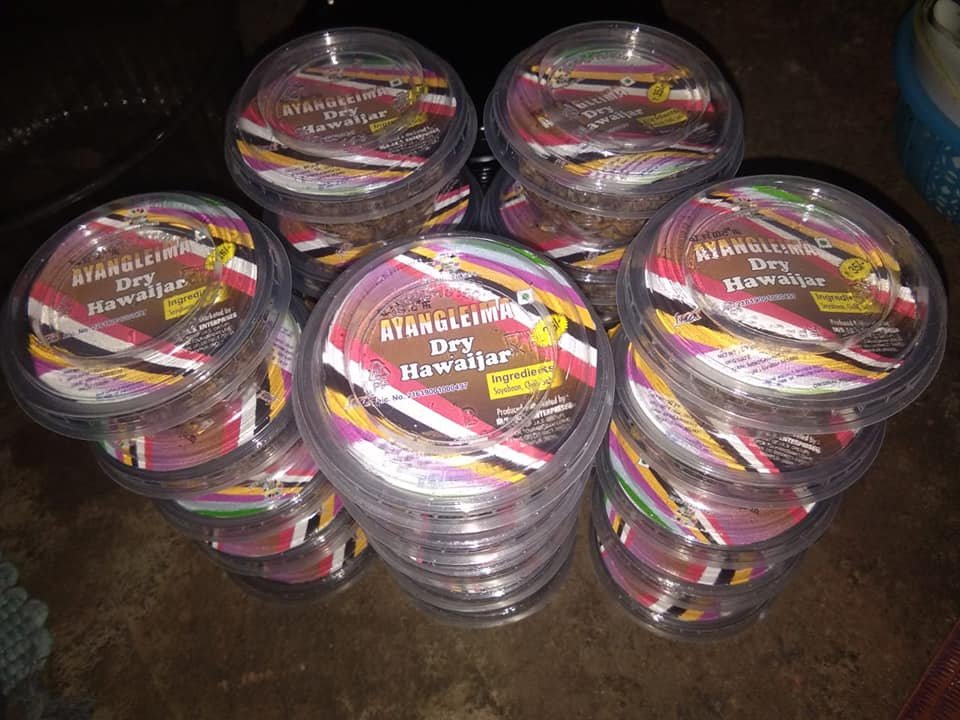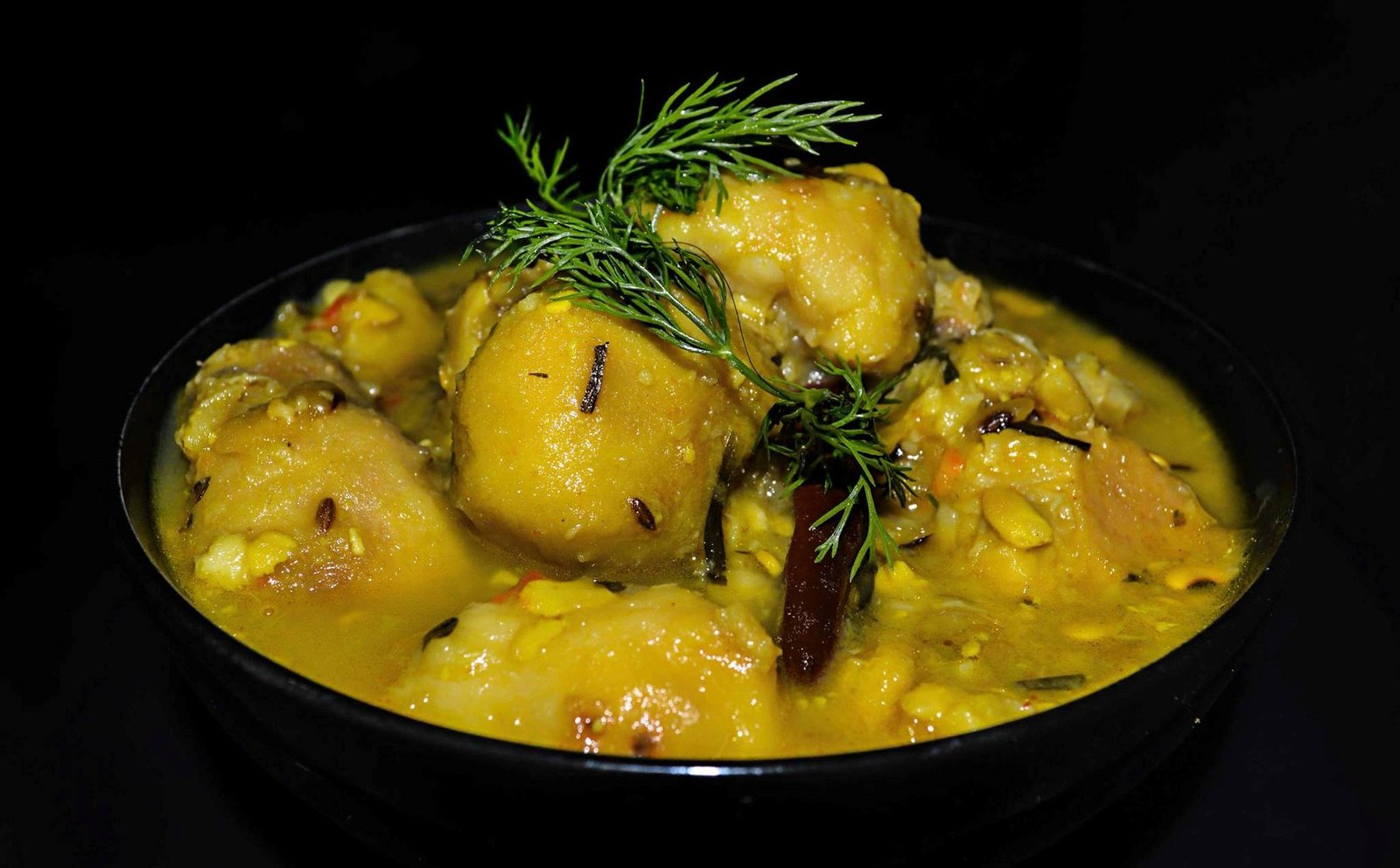Hawaijar is a traditional fermented soy product originating from Manipur with a distinctive flavor and stickiness and has been consumed as a regular food in every home.
In every Meitei household, Hawaijar is prepared for home consumption. Some are prepared on large scale for selling. To prepare these fermented soy products, small and medium-sized soybeans are cleaned and sorted.
Method to prepare Hawaijar using soybeans
Although there are many varieties of soybeans, two varieties, namely the local variety with small and larger round seed varieties, are used in Hawaijar preparation. However, local variety small soybean is more preferred for their unique flavor.
The fermentation process takes place through natural fermentation. Whole soybeans are used in Hawaijar preparation. They are prepared at home without the need for very sophisticated equipment but using the rudimentary tools available in every home. Technology is passed down from generation.
The soybean seeds are soaked overnight and washed thoroughly with tap water and boiled. Some used pressure cookers until the seeds are soft. After draining the excess water, the cooked soybeans are washed with hot water and wrapped with a clean cotton cloth.
However, clean fig leaves (Ficus hispada), locally known as Ashi heibong mana is used. This is the best for speeding the fermentation of Soybeans. Sometimes, banana leaves (Musa sp.) are also used.
Boiled soybeans are well packed in a small bamboo basket with a lid locally known as Lubak. The base and sides of the basket are layered and lined with Ashi heibong mana or Banana leaves. The basket is then wrapped in a cloth and kept in the sun or near a fireplace or buried in paddy straw for the fermentation process to take place. The whole process takes 4 to 5 days.
The final product is brown in color with a sticky viscous white appearance that gives off a slight ammonia aroma. The finished products are wrapped in banana leaves and ready to be tasted as a side dish like Hawaijar Ametpa, Paan Hawaijar thongba, and Chagempomba.
Self-life of Hawaijar
One important thing to note is that this fermented soybean has a very short shelf life of 3-4 days only. Therefore, the product is sometimes sun-dried for long-term storage. The traditional method consists in drying the product in the sun. For long-term storage and, depending on the flavor chosen, the fermented soybeans are kept in the form of a cake over the fireplace, or the individual beans are separated, dried in the sun, and stored in containers.
Common recipe for fermented soybeans
Hawaijar is known for its unique flavor and scent and has been consumed as a regular food in all homes. It is found in most of the signature dishes of Manipur. It is widely used as a seasoning with vegetables. It is consumed directly or used as a flavoring in vegetable products, making it softer and tastier. A special Manipuri delicacy called Chagempomba is made with Hawaijar, rice, and other vegetables. Paan Hawaijar dish is also the signature dish of Meitei. It is also eaten as a side dish consumed as a paste with chili and salt known as Ametpa. A fermented fish, Ngari is added to enhance the flavor. It can be eaten raw with salt and chili (U morok) or cooked, etc. These days, Hawaijar is cooked with smoked beef or pork for non-veg lovers.

Value addition of fermented soybeans
Dried Hawaijar is also cooked with meat or consumed in the form of a pickle. In this preparation, the Hawaijar is fried in oil along with some spices, and a pinch of salt is added to taste. It is then filled into a bottle along with the excess oil and sealed so that it can be stored for a longer period of time. To make soy chutney, whole dried hawaijars are soaked, fried in vegetable oil, and then seasoned with salt and chilies.

Health benefits of Hawaijar
It is known that fermented products are known to provide bio-nutrients, and minerals, and enhance flavor and aroma. The process also increases digestibility and exerts health-promoting benefits. Fermented soybeans are known for their quality and richness in protein.
Ingredients to prepare Paan Hawaijar thongba
- 500 g paan peeled
- Two pieces of fermented fish (Ngari)
- One teaspoon of chili powder
- Two-three pieces of whole dry chilies
- Two teaspoons of Hawaijar
- One tablespoon of oil
- One onion finely chopped
- 4-5 strands of chives (maroi nakupi) cut into 3-4 inches long
- One teaspoon of cumin powder
- One teaspoon of turmeric powder
- Salt to taste
- Coriander leaves for garnish
How to prepare Paan Hawaijar recipe?
Cook the Paan in a pressure cooker on a high flame. Once it whistles, turns down the heat and keep it on low flame for 5 more minutes allowing pressure to build up and soften the Paan turn it off after 3-4 whistle. Keep the cooker cool until the pressure reduces on its own.
Heat the oil in a Khang or Wok on medium flame and stir fry the chopped onions, whole dry chilies, and chives together. Add the cumin and stir fry together for 3-4 minutes until they wither.
Now take out the Paan after straining out the water. They should be soft and melt in the mouth.
Next, stir fry together the Paan with the chili powder and fermented fish, Ngari.
Now add three cups water along with the Hawaijar and turmeric powder.
Let it boil and shimmer on the low flame under a closed lid for 10 minutes to allow it to absorb all the flavors.
Add salt and turn off the heat.
Add coriander leaves for garnish and Paan Hawaijar is prepared to serve 4-5 people.

Naorem Mohen is a natural farmer, full-time blogger, and entrepreneur dedicated to promoting Manipur’s black rice Chakhao, local beverages, and edible mushrooms.
